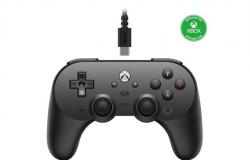In 2024, Samsung is getting a makeover in terms of audio offerings. If abandoning the bean format of its Buds family is a strong choice, the decision to offer an open architecture on the Buds3 is another. Until now, the whole family was to be placed in the semi-intra category, apart from the Buds Live aside in 2021. A way of aligning with Apple’s offer with on the one hand semi-intras, aka the AirPods Pro, and on the other a button format with the classic AirPods.
And just like the Cupertino company, Samsung has made the surprising choice here to offer active noise reduction in an open format. For the rest, the Buds3 are in the same boat as the Galaxy Buds3 Pro in terms of connectivity and user experience. Only the autonomy and the audio part differ somewhat. Indeed, for the latter, the Galaxy Buds3 do not have two, but only one 11 mm speaker.
Price & availability
The Samsung Galaxy Buds3 have been available since July 24, 2024 at the official price of €179. They come in two colors: white and metallic gray.
Test conditions
We tested these headphones under firmware version R530XXU0AXF3 with the Galaxy Wearable app version 2.2.59.24061361.
Construction & Confort
Make no mistake. If the Galaxy Buds3 are similar in their new design to the AirPods, they are not an aesthetic copy. Samsung actually opts for a much more angular stem design. Each is made up of four white faces, like a prism, a black line to facilitate volume management, as well as a specific color code (orange-red to distinguish the right earphone and blue for the left).
Although this new look can be divisive, the overall design of the headphones does not suffer from any major flaws. Unsurprisingly, they give pride of place to plastic, but the assembly quality is there. Good points therefore, especially since like its high-end colleagues, the Buds3 benefit from IP57 certification, i.e. resistance to dust and immersion in water.
On the other hand, maintenance is a more problematic factor. Certainly, the headphones are light (4.7 g each) and quite comfortable when they are in place. However, the surface to be placed at the entrance to the ear canal is larger than on AirPods. As a result, with no fins or at least a more grippy surface, the headphones feel like they could fall off at any moment. This is particularly the case when they are docked in small ears.
These falls have only happened on rare occasions (chewing, fast walking, leaning forward position, etc.), but this feeling disconcerts during the first weeks of use, so much so that we find ourselves replacing them regularly for fear of lose them. Although generally successful, the format open fit Galaxy Buds3 is therefore not recommended for all body types, nor for sports use.
Housing
Logically, the case differs greatly from that of the Galaxy Buds2. It is also a carbon copy of that of the Buds3 Pro. Namely, the same compactness (48.7 x 58.9 x 24.4 mm for 46.5 g), the same transparent cover, the same flat bottom to facilitate a vertical position and the same color code. Itou, note the presence of wireless charging and the absence of IP certification.
If the hinge is rather solid and the construction serious, the overall handling is not the most optimal. Firstly, it is not possible to open the cover with one hand, while the angular stem does not facilitate quick storage of the headphones. Unlike a round rod which allows you to do it on the fly, you have to be very precise here.

User experience
Orders
The new design of the Galaxy Buds3 necessarily leads to a change in the controls. Just like on the Galaxy Buds3 Pro, Samsung opts for hybrid controls, i.e. a swipe for the volume and different pinches with haptic feedback for the rest.
If you are used to traditional controls on a touch zone, it will take some time to adapt. The reason for this is that the prism format of the rods is a little confusing at first, especially when it comes to managing the volume. Once you get used to it, the controls are responsive as desired, while all actions (navigation, listening mode, play/pause) can be performed on both headphones.
Application
As usual, Samsung does not allow iOS users to access its Galaxy Wear app. Owners of Apple products simply do not have access to any settings.
For their part, lucky owners of an Android smartphone will be able to enjoy it to their heart’s content. Whether in terms of ergonomics or functionalities, the application is complete and easy to use. 9-band equalizer and listening presets, accessibility options, location via a beep… Without necessarily being the most comprehensive on the market, this dedicated app is up to the task.
Connectivity
Another usual frustration is that Samsung reserves many features for its own ecosystem. See for yourself: LE Audio compatibility with Auracast, multipoint connection (Samsung Auto Switch), SSC and SSC UHQ codecs (24-bit/96 kHz), Spatial audio with head tracking and on-the-fly translation via Galaxy AI.
That’s still a long list. So much so that with a product not running OneUI, the Bluetooth 5.4 chip in the Galaxy Buds3 becomes almost ordinary. However, it is possible to benefit from port detection and SBC and AAC codecs. In terms of latency, it’s not Byzantium either. With the SBC codec, we measured 260 ms. It is difficult in these conditions to watch video content properly without automatic compensation.

Audio
Unlike the Galaxy Buds3 Pro which benefit from a two-way sound architecture, the Samsung Galaxy Buds3 only have a single 11mm speaker. As usual, the South Korean relies here on a generally energetic signature without unpleasant excesses. Certainly, balance is not the biggest strong point of these headphones, however the technical level is generally satisfactory.
From the beginning of the spectrum, it is possible to realize this. Both deep and precise, the bass gives body to the listener without distorting it. There follows a regular slope up to the rather coherent mids. Thus, all instrument departures sound natural, because they are not swallowed up by the bass. Although the high-mids suffer from a slight imbalance, the voices are not veiled. The slight bump around 1 kHz allowing them to be subtly projected forward.
Due to the absence of a transducer dedicated specifically to treble, they display some shortcomings in this part of the spectrum. Already, the whole thing oscillates a little too much, which affects the tonal balance. In addition, the slight dip present just before the start of the highs obstructs the listening a little. By not wanting to be too aggressive, Samsung avoids the flickering and artificial appearance of certain notes. However, this is to the detriment of a certain musicality since the midrange-treble transition lacks precision compared to the rest of the spectrum.
Despite this, the Galaxy Buds3 overall offer a satisfactory signature and an improvement compared to the previous model. The technical quality is there, the soundstage is sufficiently wide, the distortion is impeccable, while the separation of the instruments is appreciable. But, because there will be a big but…
The listening experience varies greatly depending on how these headphones will be placed in your ear canal. As mentioned previously, they can be unstable in small ear shapes. This can sometimes cause leaks that can affect listening quality. As a result, the bass can lose energy and vocals tend to become more shrill. This is slightly frustrating, because you then have to replace them fairly regularly to take full advantage of their qualities.

Isolation
Due to the inherent physical limitations of sound, noise reduction in an open format is a very delicate exercise. Samsung is risking it here without much success. Outdoors, background noise is generally reduced, without disappearing completely. The fault is too timid active noise reduction, the latter never reaching -10 dB at low frequencies. As a result, the sudden roar of cars or the sound of subway rails remains audible, whatever happens.
The same goes for non-static noises, such as surrounding conversations, as well as unpredictable noises. In a open spaceimpossible to create a bubble of silence. Despite a dip in the beginning of the high-mids, voices remain perceptible, as do keyboard noises or doors closing.
Not totally useless, but poorly executed, active noise reduction allows you to better appreciate your music in quiet urban environments, but don’t expect more. In this area, Samsung still has work to reach the level of Apple and its AirPods 4.

Hands-free kit
Without necessarily being perfect, the Galaxy Buds3 hands-free kit can be used in most circumstances. In a quiet environment, the voice is intelligible and no artifact disturbs the whole, except perhaps a few whistling sounds which lengthen at the end of the sentence. In a quiet street, some distortions begin to rear their heads, especially at the highest frequencies. In addition, the voice is more recessed, but it remains easily understandable.
On the other hand, in a very noisy environment, conversations will be much more muffled and jerky, the fault of active noise reduction that is too lax on sudden noises. It is possible to have a conversation, but it will not be the most pleasant.
Points forts
-
Ample and controlled bass.
-
Airy soundstage.
-
Good build quality, waterproofing.
-
Good comfort, total absence of intrusion into the ear canal.
Weak points
-
Perfectible precision of high-mids and treble.
-
Active noise reduction not very effective.
-
Support that will not suit all ear shapes.
-
No iOS app, limited connectivity outside the Samsung universe.
Conclusion

How does the rating work?
With their new design, the Galaxy Buds3 venture into the field of open headphones. If the manufacturing quality and user experience match Samsung’s know-how, the fit of the headphones proves to be unsuitable for smaller ear shapes. Far from being a detail, this can have significant consequences on sound quality, which is otherwise generally good, and insulation. Far from being as august and complete as the Apple AirPods 4, the Buds3 nevertheless remain a plausible alternative for earbud aficionados running Android, and from a stronger under the Samsung ecosystem.







